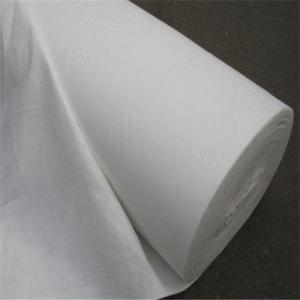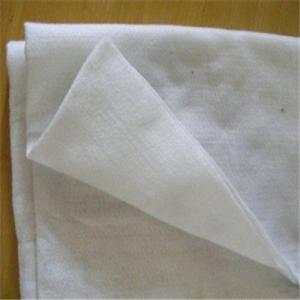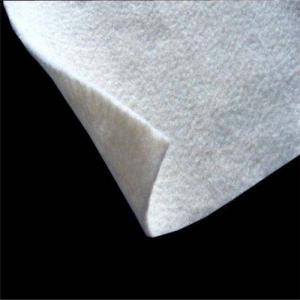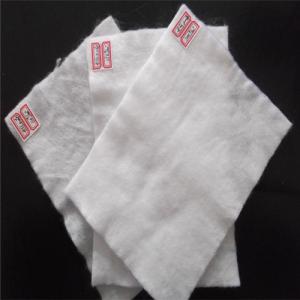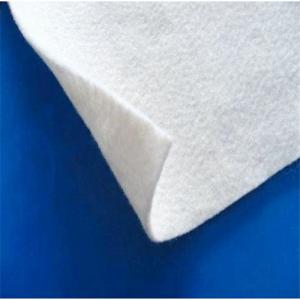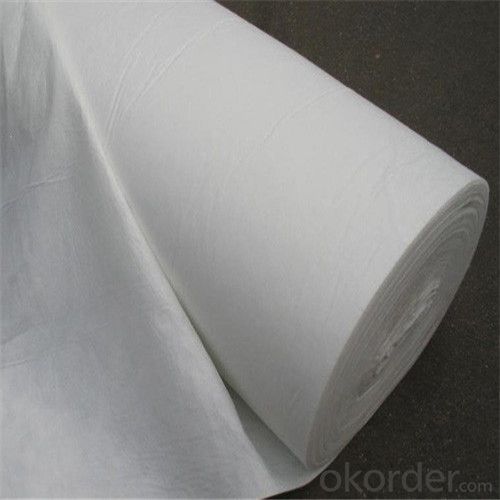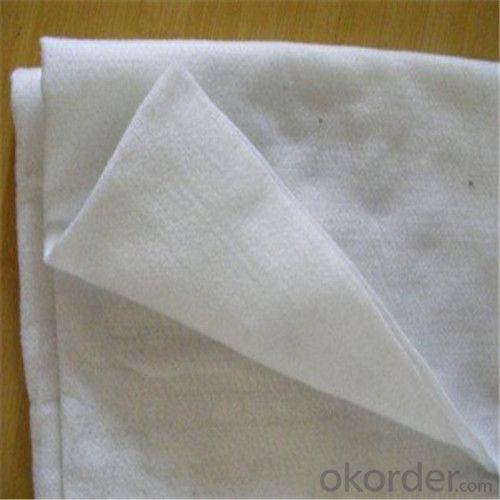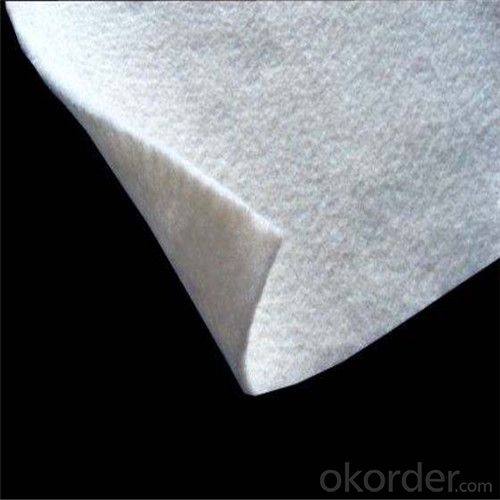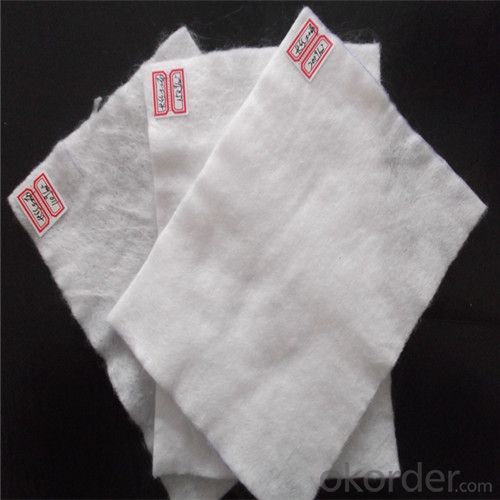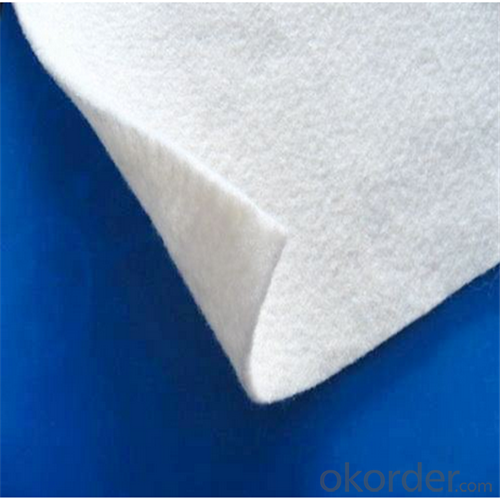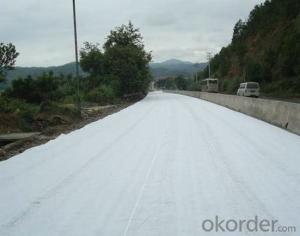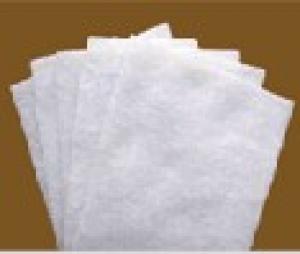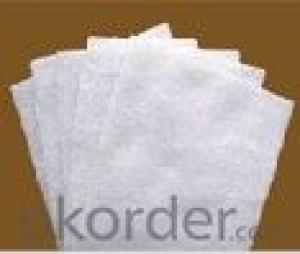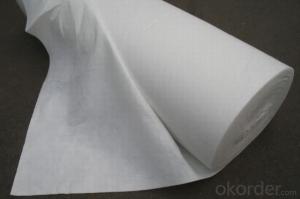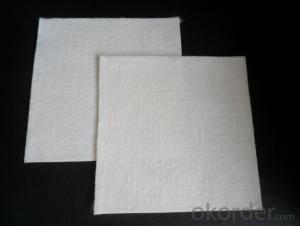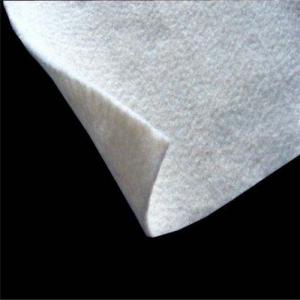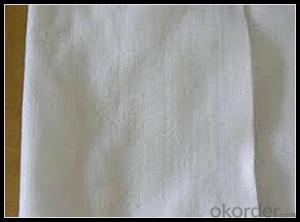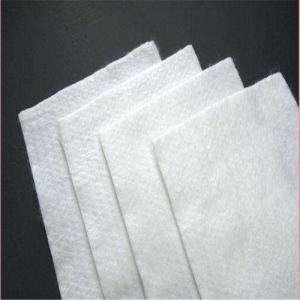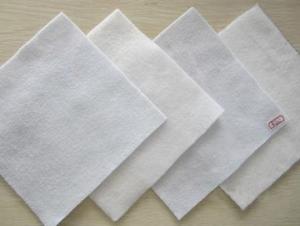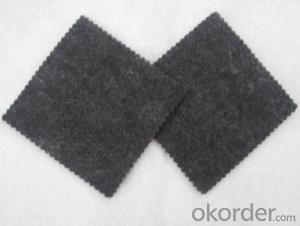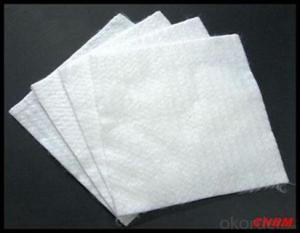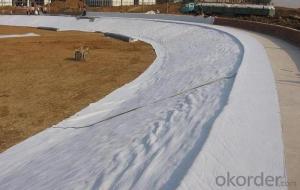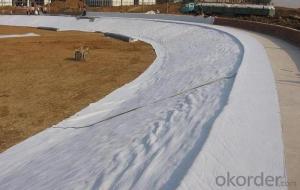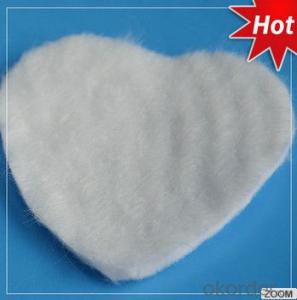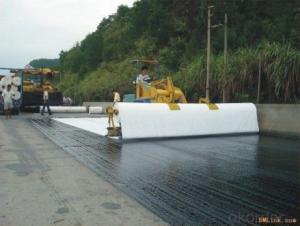Polypropylene Nonwoven Geotextile for Road Construction
- Loading Port:
- China main port
- Payment Terms:
- TT or LC
- Min Order Qty:
- 1000 m²
- Supply Capability:
- 1000000 m²/month
OKorder Service Pledge
OKorder Financial Service
You Might Also Like
Specification
Polypropylene Nonwoven Geotextile Specification
No. | Item | Specification | Note | ||||||||||
Mass per square meter g/m2 | 100 | 150 | 200 | 250 | 300 | 350 | 400 | 450 | 500 | 600 | 800 | ||
1 | Weight Variation % | -8 | -8 | -8 | -8 | -7 | -7 | -7 | -7 | -6 | -6 | -6 | |
2 | Thickness mm ≥ | 0.9 | 1.3 | 1.7 | 2.1 | 2.4 | 2.7 | 3.0 | 3.3 | 3.6 | 4.1 | 5.0 | |
3 | Width Variation % | -0.5 | |||||||||||
4 | Breaking Strength KN/m | 2.5 | 4.5 | 6.5 | 8.0 | 9.5 | 11.0 | 12.5 | 14.0 | 16.0 | 19.0 | 25.0 | MD and CD |
5 | Elongation at Break % | 25 ~ 100 | |||||||||||
6 | CBR Mullen Burst Strength KN≥ | 0.3 | 0.6 | 0.9 | 1.2 | 1.5 | 1.8 | 2.1 | 2.4 | 2.7 | 3.2 | 4.0 | |
7 | Sieve Size 090 mm | 0.07 ~ 0.20 | |||||||||||
8 | Vertical Permeability Coefficient cm/s | k× (10-1 ~ 10-3) | k=1.0-9.9 | ||||||||||
9 | Tear Strength KN ≥ | 0.08 | 0.12 | 0.16 | 0.20 | 0.24 | 0.28 | 0.33 | 0.38 | 0.42 | 0.46 | 0.60 | MD and CD |
Needle punched geotextile after treatment method | |||||||||||||
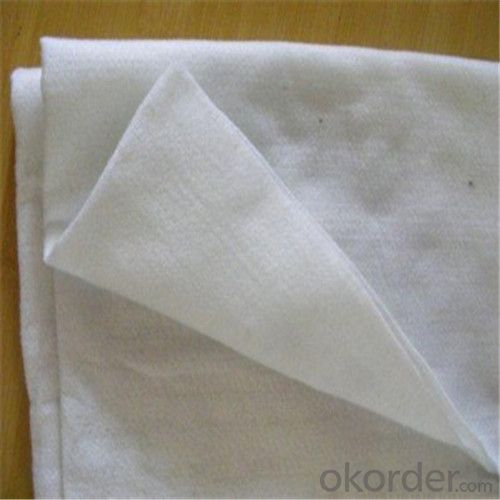
Polypropylene Nonwoven Geotextile Quality Assurance
1.On a regular basis or as per your request,we entrust national testing agencies to conduct quality inspections
2. Strictly in accordance with the ISO9001-2008 international quality system standard,we monitor and manage the whole process throughout production,quality testing,and measurement to ensure product quality
3. For quality-related construction delay or substandard construction(except for damage or losses due to customer’s responsibility or irresistible natural disasters),we have refunding,replacement,and repair services.We will respond to customers’ feedbacks on quality issues within 24 hours.
Polypropylene Nonwoven Geotextile After-sales Service
1.In order to provide customers with comprehensive technical support,we will provide technical and other related information upon request in a timely manner.
2.In required,we will appoint specialized technicians to the construction site to give technical trainings to construction people,and offer technical guidance throughout the whole construction process.
3.For damage due to shipment and delivery,after we receive the complaint,we will check the issure through provided pictures and videos.If our responsibility is confirmed,we wil offer free replacement.
4.When the construction is completed,as your request,our technical staff may participate in the final acceptance.
Polypropylene Nonwoven Geotextile Packaging & Shipping
Packing: plastic film or woven bag.
Shipping: About 15 days after receipt the deposit
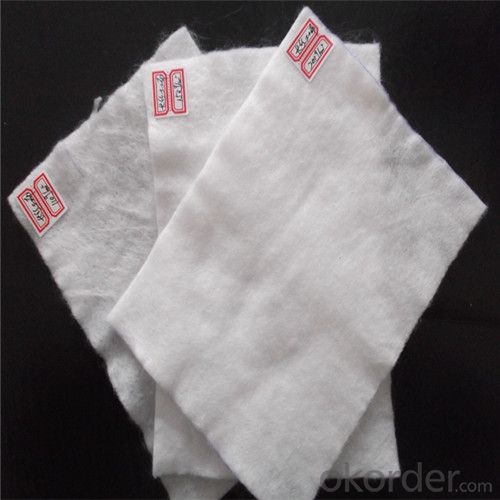
Polypropylene Nonwoven Geotextile FAQ:
Q: What kind of payments does jenor support?
A: T/T, L/C, Cash are accepted.
Q: Do you charge for the samples?
A: Accordeing to our company policy, the samples are free, we only charge the freight fee. And we will return the freight fee during the next order.
Q: Can you produce according to customers' design?
A: Sure, we are professional manufacturer, OEM and ODM are both welcome.
- Q: How do geotextiles help in preventing soil contamination?
- Geotextiles help in preventing soil contamination by acting as a barrier between the soil and potential contaminants. They are permeable fabrics that allow water and air to pass through while filtering out harmful substances. Geotextiles can be used to line landfills, ponds, and other containment areas to prevent the leaching of pollutants into the soil. They can also be used in erosion control measures to stabilize soil and prevent the spread of contaminants.
- Q: Roof garden pool at the bottom with pebbles, pebbles above with geotextile, geotextile above the soil
- Should be installed drainage board it! Geotechnical material manufacturers to answer!
- Q: Are geotextiles resistant to UV degradation?
- Yes, geotextiles are generally designed to be resistant to UV degradation. They are often treated or manufactured with additives that can help protect them from the damaging effects of sunlight, making them suitable for outdoor applications.
- Q: Do you need to suture the lower geotextile of composite geomembrane?
- Look at construction requirements
- Q: How are geotextiles affected by temperature variations?
- Geotextiles are affected by temperature variations as they can expand or contract based on the temperature changes. This expansion or contraction can impact their effectiveness in various applications such as erosion control, filtration, or drainage. Additionally, extreme temperatures can weaken the fibers of geotextiles, reducing their overall durability and lifespan. Therefore, temperature variations need to be considered while selecting and designing geotextile systems to ensure their optimal performance and longevity.
- Q: How do geotextiles affect air quality?
- Geotextiles do not directly affect air quality as they are typically used in civil engineering applications for erosion control, filtration, and reinforcement purposes. However, the selection and installation of geotextiles can indirectly impact air quality by preventing soil erosion, which in turn reduces the release of dust particles into the air.
- Q: Are geotextiles resistant to extreme weather conditions?
- Yes, geotextiles are typically designed to be resistant to extreme weather conditions. They are made from durable materials that can withstand harsh weather elements such as heavy rainfall, high winds, and intense sunlight. Additionally, geotextiles are engineered to be resistant to erosion, which further enhances their performance in extreme weather conditions.
- Q: How do geotextiles help in preventing the migration of fine particles in soils?
- Geotextiles help in preventing the migration of fine particles in soils by acting as a barrier or filter that allows water to pass through while retaining the particles. This prevents the particles from being eroded or washed away by water flow, thereby stabilizing the soil and reducing the risk of erosion.
- Q: How do geotextiles enhance the performance of geocells?
- Geotextiles enhance the performance of geocells by providing additional stability and reinforcement to the structure. They act as a separator between the soil and the geocell, preventing the intermixing of different materials and reducing the risk of soil erosion. Geotextiles also improve the load distribution and filtration properties of geocells, allowing for better drainage and preventing the clogging of the cells. Overall, geotextiles enhance the overall strength, durability, and functionality of geocells in various civil engineering applications.
- Q: What are the limitations of geotextiles?
- Geotextiles have certain limitations that need to be considered. Firstly, they are not suitable for high load-bearing applications and may require additional reinforcement. Secondly, they may degrade over time due to exposure to UV radiation, leading to a decrease in their effectiveness. Additionally, geotextiles may not be effective in controlling fine particles or preventing the growth of vegetation in certain scenarios. Lastly, they may be susceptible to damage during installation or due to punctures and tearing, requiring careful handling.
Send your message to us
Polypropylene Nonwoven Geotextile for Road Construction
- Loading Port:
- China main port
- Payment Terms:
- TT or LC
- Min Order Qty:
- 1000 m²
- Supply Capability:
- 1000000 m²/month
OKorder Service Pledge
OKorder Financial Service
Similar products
Hot products
Hot Searches
Related keywords
